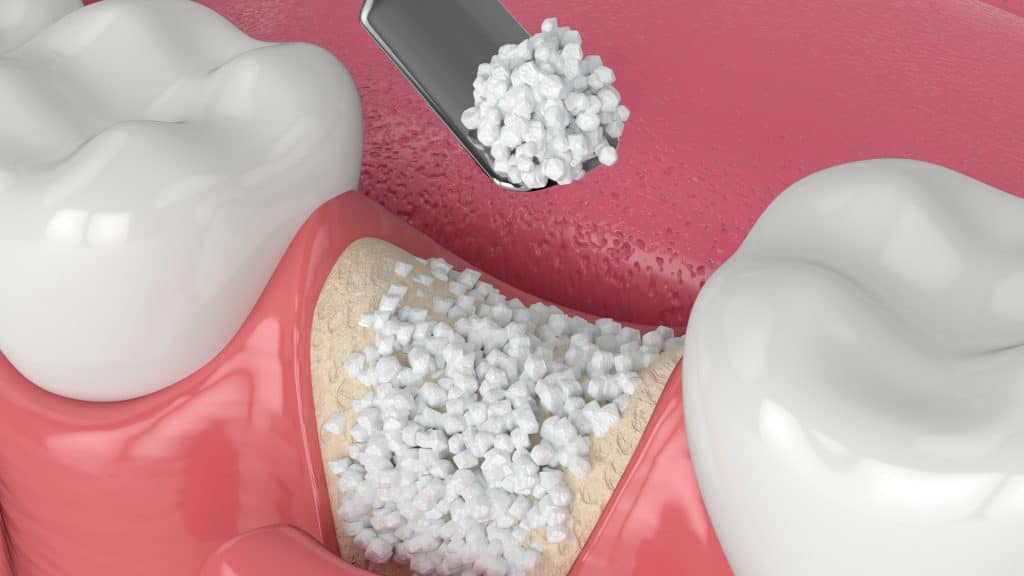Dental bone grafting is a procedure that restores or replaces missing teeth with new ones. It involves removing a small amount of bone from your jaw and placing it where needed. This helps create a strong foundation for the new tooth.
When you lose a tooth, the surrounding bone begins to shrink. This can leave your jawbone weaker and more likely to break, which can cause problems with neighboring teeth. Dental bone grafting can help restore that lost support, allowing you to chew properly again and maintain your dental health.
Who Needs Dental Bone Grafting?
If you have lost one or more teeth and would like to replace them, you may be a good candidate for dental bone grafting. This procedure is sometimes used to improve the appearance of your smile, but its primary purpose is to create an environment where new teeth can grow in.
Missing teeth
Missing teeth can cause bite problems and gum disease and make your face look older. This is because the bone in the jaw that supports your teeth is constantly being worn down by chewing and talking. When you lose a tooth, this bone begins to shrink and recede into the jawbone.
If you have missing teeth, a doctor may recommend dental implants or bridges to replace them.
Bone loss
Like missing teeth, if you have bone loss due to injury, infection, or congenital defects, you may need a dental bone graft to build up your jaw and support the adjacent teeth.
Gum disease
If you have chronic gum disease (periodontitis), the gums can pull away from their attachment to the underlying jawbone (alveolar crest). While this doesn’t affect your overall health, it will eventually cause problems.
Types of Dental Bone Graft
Block bone graft
When there’s a significant bone loss at the front of your jaw, a dental surgeon takes a bone from the back of your jaw where the wisdom teeth used to be.
Socket graft
This bone graft is done simultaneously with tooth extraction to avoid tooth loss due to the removal.
Sinus lift
When the tooth loss involves the upper molars, the sinuses move down because of the extra space. In this scenario, a bone graft gives the upper molars stability and helps move the sinuses back in their place.
Working/Procedure
Our dental surgeons at DICC take every measure to ensure the dental bone graft procedure is done with utmost care. Here’s how our experts follow the procedure:
- Before the procedure, we measure your vital signs to ensure you’re fit to start the process and give you anesthesia.
- After cleaning the affected area, our surgeon will make an incision in your gum to create space for the graft.
- The dental graft is then placed between the two sections of your bone that will grow together.
- After the graft is in place, our dental surgeon seals or secures it with an adhesive membrane or screws.
- Finally, the incision is sewn and allowed to heal.
How long does it take to heal a dental bone graft?
The healing phase depends on your age, physical health, and overall health. The recovery time can be anywhere between two weeks to over two months.
If you need to undergo dental implant surgery, you’ll have to wait until the bone graft fuses with the bones in your mouth, which can take a few months. Our dentists recommend patients visit for regular checkups to monitor the recovery and healing of the dental bone graft.
How to speed up the healing process of dental bone grafting?
Following the procedure, our dental surgeons at DICC prescribe antibiotics and pain relievers that help prevent infection and counter the pain and swelling.
What to do:
Here are some aftercare tips that our dentists suggest following to speed up the healing process:
- Eat soft and nutritious food to avoid discomfort at the surgery site during the initial days
- Use ice packs to help reduce swelling and pain
- Rest and stay hydrated to help flush out the toxins
What to avoid:
- Alcohol and caffeine because they lead to dehydration which can slow the healing process
- Hard and crunchy foods such as nuts
- Smoking because nicotine restricts the oxygen flow
- Physical activity
Dental bone graft: before and after
As with any dental surgery procedure, it’s usual to experience some pain, swelling, and restrictions in your jaw movements. This becomes evident when the anesthesia wears off, after which you’ll need to consume pain antibiotics and pain relievers to ensure a speedy recovery.
It’s also crucial for a dental surgeon to offer careful and thorough instructions to make your recovery painless and easy.
Is it painful?
No. You’ll experience little to no pain during the procedure because of the anesthesia. However, when the procedure is completed, you may experience pain and swelling at the surgery site, which is normal and may only last for a few days.
Side effects/risks
The common side effects of a dental bone graft include pain, swelling, difficulty chewing, and minor bleeding for the first few days. However, these can be easily countered with over-the-counter pain relievers, cold packs, and sufficient care.
Though the procedure is typically safe, it can involve risks in rare cases such as infection, nerve damage, and blood clots.
There’s always a risk of infection after surgeries, which can worsen if not taken care of. To avoid this, make sure you follow the entire course of antibiotics after the procedure.
Final Thoughts
Dental bone grafts help avoid long-term problems associated with tooth loss or gum disease. To learn more about this procedure, request an appointment with our board-certified dental experts today.
Book your appointment now by calling us at (720) 740-0696.




